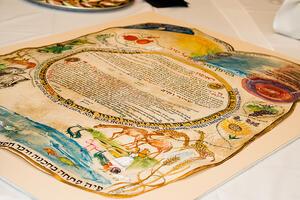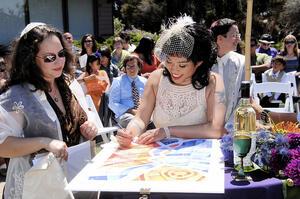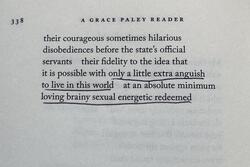Reclaiming the Ketubah as a symbol of equality and women's independence
Courtesy of Sarah McGee/Flickr.
Courtesy ofJuNoah/Flickr.
The evolution of the Ketubah in the Jewish tradition has taken an interesting turn in recent times. Once a vehicle to protect women from financial devastation in the case of divorce or death of a husband, it is now considered for many a traditional prerequisite for marriage as well as an archival work of art, and is often created and sold by women as part of their own businesses.
The traditional Ketubah was written in the ancient Aramaic language and outlined the rights and responsibilities of the husband to the wife. It was meant to protect the woman and serve as a deterrent for divorce. The Ketubah was a replacement for the money paid by the groom to the bride for marriage. Since many men could not afford this sum, the Ketubah allowed them to delay the time in which the money would be payable. If the marriage was broken this sum would have to be paid, creating the disincentive for divorce.
One of the problems the Ketubah created was that only the husband could provide a “get” or release from the marriage. In ancient times, a civil court in the Jewish community had the power to force the husband to provide the get. These courts however ceased to exist once Jews became absorbed into the larger communities and nations. After a long time struggling with a solution and not reaching an agreement among the Jewish community at large, some Conservative Rabbis added the Lieberman Clause to the Ketubah. This clause allows the woman to obtain a divorce from the Rabbinic Court, which would force the husband to provide the get.
In modern times, the Ketubah has moved beyond serving solely as an enforceable legal document in Jewish law. It is now often seen as a traditional expression of a couple’s heritage and commitment to each other, as well as a work of art.
In many cases, the traditional Aramaic language has been supplemented with English text. Additionally, Ketubot created for Reform, Interfaith and same-sex ceremonies may use only Modern Hebrew and English texts without the Aramaic. The texts of these more modern Ketubot are often written by the purveyor of the Ketubah, and will vary with each artist. The wording usually conveys a joint commitment to upholding religious and cultural traditions rather than outlining specific rights and responsibilities of the parties. The buyer can personalize their Ketubah before it is purchased and even customize it, so they may choose their own wording altogether.
Recently several states have legalized same-sex marriages. As a result, many Ketubah artists are working with this new clientele and adjusting the Ketubah text accordingly. In this case, the Ketubah text does not outline a husband’s rights and responsibilities to a wife, but serves as a symbol of a couples’ equal commitment to each other in marriage. The traditional wording is often replaced by a joint vow of loyalty and love and carries forward the Jewish traditions in their lives.
It is interesting to note the evolution of the Ketubah over time. Once a vehicle to protect the woman in a marriage, it is now a vehicle that is embraced and created by women. As women have become more financially independent, the traditional protections of the Ketubah are not as relevant in modern times. The Ketubah has gone from a vehicle to simply protect women to something that is now spearheaded and celebrated by women that brings their perspective and needs into the document and into Jewish family and life.









So fascinating! I hope you don't mind that I'm linking to this article on my blog about converting to Judaism. Feel free to check it out! https://loveandmatzoballs.blogspot.com/